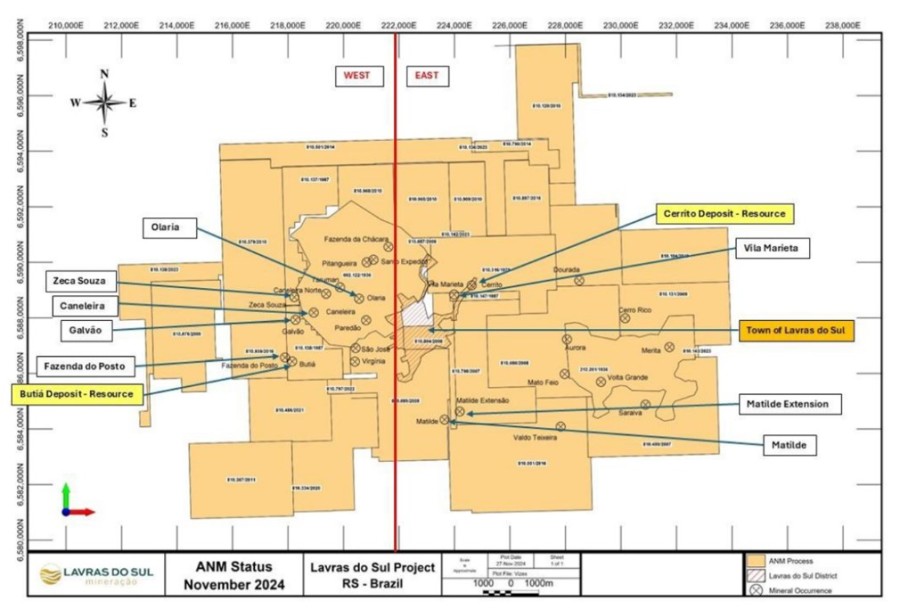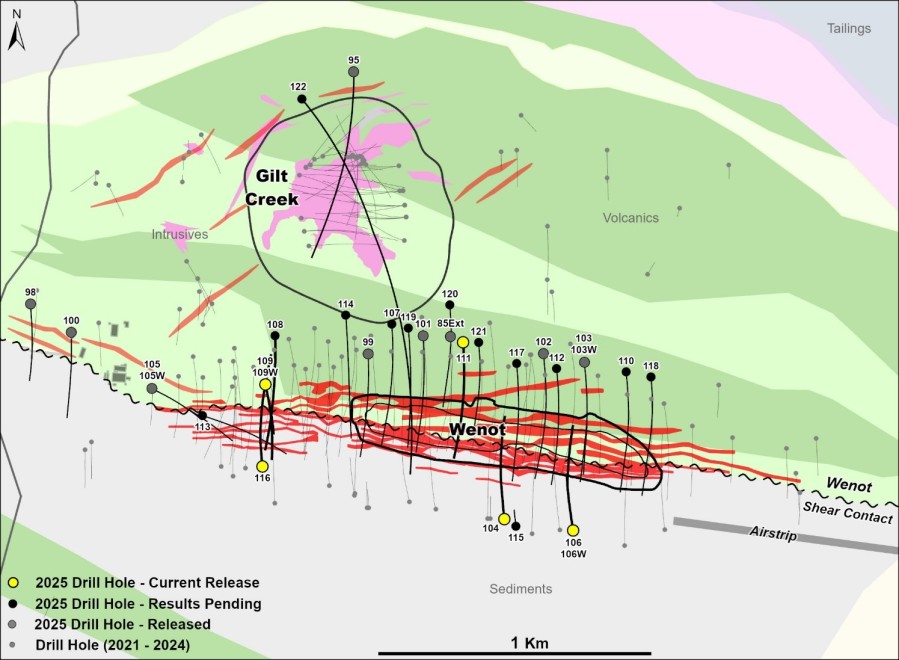VANCOUVER, BRITISH COLUMBIA--(Marketwired - Oct. 2, 2017) - Medgold Resources Corp. (TSX VENTURE:MED) (the "Company" or "Medgold") is pleased to announce results for the Karamanica Prospect, which is part of the Tlamino Project and located 8 km to the west of Medgold's flagship Barje Prospect. Assays from a recent soil sampling campaign define two large anomalies with consistent soil geochemistry with > 50 ppb Au-in-soil, within which are significant linear zones of >100 ppb Au. The highly anomalous soil geochemistry and favourable lithological units and fault structures demonstrate the high prospectivity of the Karamanica Prospect.
Dan James, President of Medgold, commented: "We are very pleased with these recent results as they help demonstrate the potential of the emerging district-scale exploration play in southeast Serbia. Previous work at Tlamino has already demonstrated high-grade mineralization at Barje, which appears to be associated with a large-scale detachment fault. Our recent soil sampling at Karamanica, as well as regional-scale reconnaissance and stream sediment sampling, is now proving that our exploration strategy is working and delivering results."
Karamanica Prospect
The Karamanica prospect is part of the Tlamino Project, currently under an Option Agreement with Fortuna Silver Mines, and is located approximately 8 km to the west of Barje, where recent work has identified high-grade mineralization and a best channel sample of 84 m at 5.6 g/t Au (see Medgold news release of July 18, 2017). Karamanica is dominated by a series of large-scale northwest-trending faults, which cut packages of schists, calc-schists, and quartz-feldspar porphyry dykes.
Medgold has completed a program of detailed mapping and rock sampling, plus grid-soil sampling,at Karamanica, with samples collected on a 200m by 50m grid. Initial reconnaissance work has identified strongly altered and brecciated felsic volcanics, locally significant calcareous schists, graphitic schists, and limestones, and zones of galena-sphalerite and pyrite-silica mineralization. Despite poor outcrop exposure in the area, a total of 129 rock chip samples have been collected to date on the prospect, with 14 returning assays greater than 1 g/t Au. The rock chip samples returned highs of 11.1 g/t Au, 7.1 g/t Au and 5.5 g/t Au, typically associated with the pyrite-silica mineralization.
Results from the soil sampling program highlight two large gold-in-soil anomalies. The first extends over an area of approximately 1 km by 1 km, and is associated with a regional northwest-trending fault, which offsets felsic volcanic rocks from basement schists and calcareous schists. The second, located approximately 1 km north of the first anomaly, extends over approximately 800 m by 600 m. Mineralization appears to be associated with of the presence of disseminated to massive sulphides within the host calcareous schists. The same fault structure hosts blind massive carbonate-replacement Pb-Zn-Ag mineralization.
With the impending arrival of the first snows on the high slopes, our exploration planning is now focussed on 2018. In the spring we expect to complete a ground geophysical survey over the main prospective zones of anomalous soil and rock chip geochemistry, with the aim of drill testing Karamanica later in 2018.
Barje Update
At Barje, preparations continue for the commencement of a 2,000 m diamond drilling program. This has involved establishing a drill-camp in the village of Tlamino, and seeking landholder permissions for drill access and drill pad creation. This process has taken longer than expected, as one of the larger landholders in the area is a state company in receivership. Accordingly, permission to use these land parcels needs to be sought from the federal government. The government is working with the Company, and it is expected that the required permissions will be granted in the coming weeks, but the result is an overall delay in the commencement of drilling. As the winter season is approaching and the area usually receives significant snowfall, the completion of the drill program prior to the snow arrival in November is highly unlikely. Medgold and its partner on the Tlamino Project, Fortuna Silver Mines ("Fortuna"), have taken the decision to delay the start of drilling until the spring of 2018.
Accordingly, Medgold and Fortuna have amended the Tlamino Project Option Agreement to remove the requirement that Fortuna spend US$1 million by the first anniversary. As a result, Fortuna has 3 years to spend US$3 million to acquire a 51% interest in the Project.
Regional Exploration
Medgold holds five granted exploration licences in the southeast corner of Serbia covering an area of approximately 500 sqkm. Two of these licences, Donje Tlamino and Surlica-Dukat, comprise the Tlamino Project currently under option to Fortuna. Exploration work at the other licences is being funded via the Company's strategic alliance with Fortuna. Over the summer, Medgold has completed licence-wide reconnaissance over all licences, which has included a fine-fraction stream sediment sampling program. Geologically, the area is dominated by the central Crnook Dome (a metamorphic core complex measuring approximately 20 km across), which forms a topographically high central core to the region. The dome is ringed by a major detachment fault, which at Barje is likely a principal control on mineralization. The regional stream sediment program has also highlighted a series of gold anomalies in the north and northwest of the dome-flanks, at the contact with the regional low-grade schists. These anomalous areas will now be the focus of follow-up work to determine the anomaly sources, via targeted ridge-and-spur soil geochemistry campaigns, and to document whether the Crnook Dome is bound here by a mineralization-associated detachment fault, as it is on the southern flanks of the complex at the Barje, Liska and Karamanica Prospects.
About Medgold
Medgold is a European-focused, TSX-V listed, exploration and development company targeting gold properties in Serbia. Run by a highly experienced management team with a successful track record of building value in resource companies, Medgold is aiming to become a leading European gold exploration company.
Qualified Person
Mr. David Clark, M.Sc., P.Geo., is a Qualified Person as defined by National Instrument 43-101 - Standards of Disclosure for Mineral Projects. Mr. Clark prepared the technical information contained in this news release and has approved its disclosure.
Quality Assurance and Quality Control
Medgold follows industry best practices for its prospecting and geochemical sampling campaigns. Samples are delivered by Medgold personnel directly to the assay laboratory facilities in Bor, Serbia. Rock chip samples are analysed by ALS Chemex using analytical method codes Au-ICP21 and ME-MS61, with overlimits for gold and silver analysed by GRA21, and for Ag, Pb, and Zn by OG62. Stream sediment samples are sieved and dried, and analysed for gold and multi-elements using analytical method code Au-ICP21 and ME-MS61. Soil samples are sieved and dried and analysed for gold and multi-elements using analytical method code Au-TL43. Medgold routinely inserts appropriate multi-element geochemical standards and blanks into its rock chip sample stream, and inserts regular field duplicate samples into the sample stream. For stream sediment and soil samples, regular field duplicates are collected to monitor laboratory performance.





